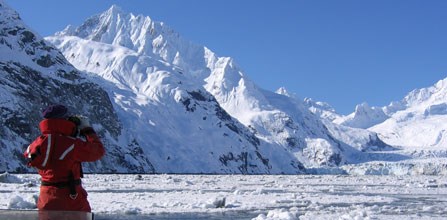
NPS 
Harbor Seals in Glacier Bay 
Harbor Seal Research Highlights 
Harbor Seal Population Monitoring 
Tracking Glacier Bay Harbor Seals 
Assessing Glacial Ice for Harbor Seals 
The NPS manages many key habitats, affording pinnipeds extra protection for reproduction and survival. 
Peer-Reviewed Publications 
Investigating Potential Causes of Seal Decline It is unclear why seals are declining in Glacier Bay. Harbor seal population trajectories at other sites (Ketchikan and Sitka) in Southeastern Alaska have been increasing or stable and vary substantially from the continuous long-term declines documented in Glacier Bay. Hypothesized reasons for the decline include interspecific competition, predation, emigration, decreases in reproductive rate, human disturbance, disease, contaminants, and nutritional stress due to changes in prey base. To address management and conservation concerns regarding harbor seal declines in Glacier Bay National Park, a multi-agency collaborative study was initiated in 2004 aimed at addressing hypotheses related to harbor seal declines in Glacier Bay. Recent research has focused on assessing survival rates, genetics, body condition, foraging ecology, costs of human disturbance as a result of vessel traffic, assessing health and disease status, and identifying habitat use and movements of seals during the over-winter period. Collaborating agencies and institutions include Alaska Department of Fish & Game, Alaska Fisheries Science Center-National Marine Mammal Laboratory & Auke Bay Laboratory, Alaska Sealife Center, University of Alaska Fairbanks-Wildlife Toxicology Laboratory, Moss Landing Marine Laboratory, University of Wyoming, and Oregon State University-Pinniped Ecology & Applied Research Laboratory. Data collection and analyses are currently ongoing for these projects.

Harbor Seal Fact Sheet |
Last updated: March 12, 2018

